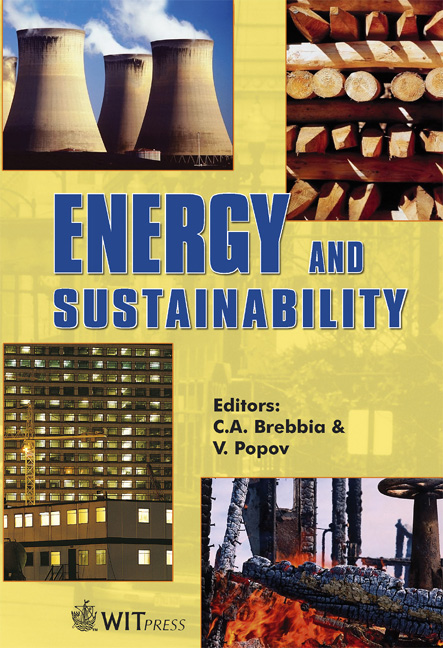Elastic Heat Exchanger In Stirling Cycle Machines
Price
Free (open access)
Transaction
Volume
105
Pages
9
Published
2007
Size
887 kb
Paper DOI
10.2495/ESUS070081
Copyright
WIT Press
Author(s)
Y. Kobayashi, M. Matsuo, N. Isshiki & W. Ishida
Abstract
The Stirling cycle machine technology is expected to be one of the solutions for preventing global warming. The machines achieving high thermal efficiency use hydrogen or helium as a working fluid. The average pressure in the machines is usually raised to 10MPa or more. These light gases need a precise sealing mechanism so that no leakage and minimum friction loss are achieved. Therefore, the use of light gases induces high cost, and makes maintenance difficult. Of course, any gas can be used in the Stirling cycle. Air was used in the 19th century. However, when air is used as a working fluid, the heat transfer in the engine becomes minimal. Consequently, the thermal efficiency falls in the engines and the COP falls in the refrigerators or heat pumps. In this paper, a method for heat transfer enhancement between the working gas and the walls of an air-charged Stirling cycle machine is attempted by installing a heat exchanger that changes shape with elasticity in the working space. By applying the method to a small engine and refrigerator charged with atmospheric air, the enhancement in heat transfer is confirmed. Keywords: Stirling cycle machines, air-charged engine, refrigeration, heat transfer enhancement, temperature drops, elastic heat exchanger. 1 Introduction Air has some advantages as a working fluid. It is abundant and available all over the world. It is less difficult to seal than the light gases. Therefore, an air charged machine can be supplied at low price and will be easy to maintain. That is
Keywords
Stirling cycle machines, air-charged engine, refrigeration, heat transfer enhancement, temperature drops, elastic heat exchanger.





